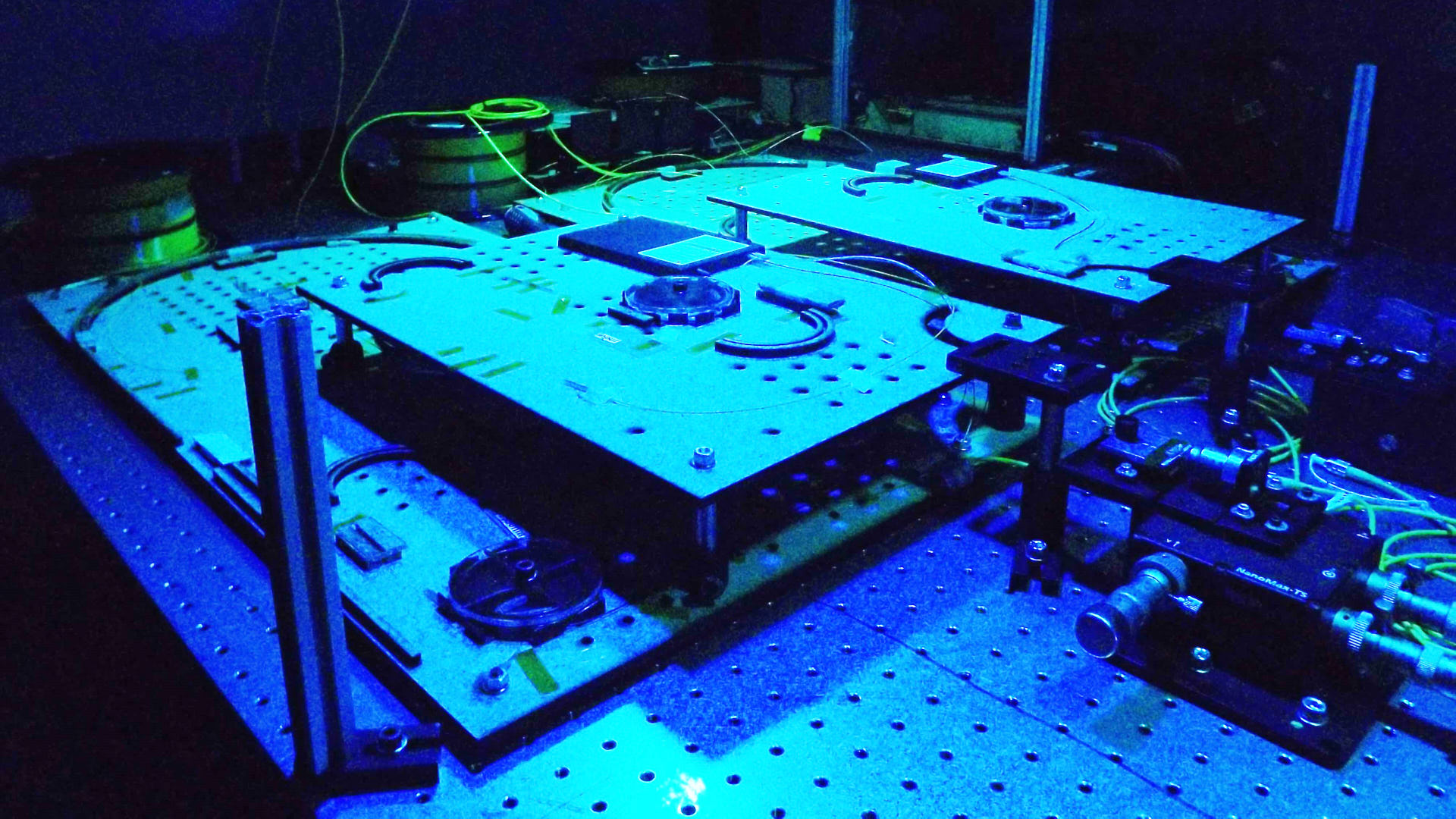Project status
In progress
Duration
Open-ended
In progress
Open-ended

The fundamental unit of light is the photon. We carry out research into how we can reliably generate single photons, how we can store them in a memory, and how we can manipulate them to process and transmit quantum information.
Technologies that exploit controlled quantum systems can achieve significant performance enhancements in areas such as computation, communications, and sensing. For example, the current race to scale up towards a fully-programmable quantum computer could result in vast reductions in the time taken to simulate the interactions of large molecules, and commensurate acceleration of pharmaceutical drug development.
Although the beam of light from a laser contains an uncountably large number of photons, making only one is difficult. We achieve this by sending a very bright pulse into an optical fibre, which pulls the electrons in the glass far away from their equilibrium positions. The resulting electron motion produces a pair of new frequencies, meaning that two photons of different colours are emitted. When we detect one of these, we know we must have produced a single, isolated photon at the other frequency. Integrating our sources and detectors with fast optical fibre switch networks enables us to use feed-forward control to enhance the performance of these single-photon sources.
Building a quantum computer based on light requires logic gates, much like those in a conventional computer. However, because photons do not interact with one another, the gates that we can build rely on interference between photons and do not always work. We are building quantum memories that store photons in atomic clouds to be read out later. Long-lived quantum memories can synchronise operations across large-scale networks, enabling the development of more complex quantum processors.
The optical properties of alkali metal vapours render them highly desirable for applications including sensing, precision spectroscopy, laser frequency stabilization, atomic clocks, and quantum memories. However, a serious technical obstacle has been reliably controlling the density of vapour within an optical cell. The atoms need to be prevented from sticking to the sides in order to interact with light, but existing methods to do this are typically slow, costly, and impractical at scale. We are developing novel methods of enhancing atomic density by coating the walls of vapour cells with nanoparticles.